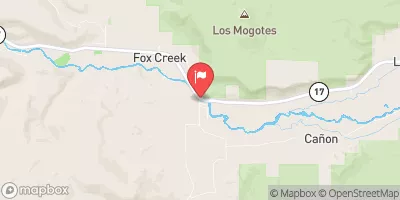Summary
Weather Forecast
Nearby Streamflow Levels
Angling Safety Guidelines
Check local fishing rules, seasons, size limits, and license requirements to ensure legal and sustainable angling.
Handle Fish Responsibly
Use wet hands, minimize air exposure, and release fish gently to improve survival rates when practicing catch-and-release.
Choose the Right Gear
Match your rod, line, and tackle to the species and conditions to increase success and reduce unnecessary harm to fish.
Respect the Waterway
Avoid disturbing habitat, prevent bank erosion, and keep a safe distance from spawning areas to protect ecosystems.
Keep It Clean
Pack out all line, hooks, bait containers, and trash—discarded gear can injure wildlife and degrade waterways.
Related Links
Area Campgrounds
| Location | Reservations | Toilets |
|---|---|---|
 Lagunitas
Lagunitas
|
||
 Upper Lagunitas / Lower Lagunitas Campgrounds
Upper Lagunitas / Lower Lagunitas Campgrounds
|
||
 Lower Lagunitas
Lower Lagunitas
|
||
 Upper Lagunitas
Upper Lagunitas
|
||
 Cruces Basin Campground
Cruces Basin Campground
|
||
 Rio de Los Pinos Campground
Rio de Los Pinos Campground
|






